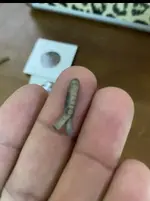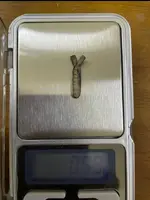Hook111111
Jr. Member
- Joined
- Oct 5, 2020
- Messages
- 40
- Reaction score
- 82
- Golden Thread
- 0
- Detector(s) used
- Garret atx
- Primary Interest:
- All Treasure Hunting
وجدت هذه العملة الغريبة على شكل مشبك شعر مصنوعة من الفضة ووزنها جرام واحد
Amazon Forum Fav 👍
Attachments
-
 Screenshot_20250103_130136_com_whatsapp_MediaViewActivity.webp25.8 KB · Views: 29
Screenshot_20250103_130136_com_whatsapp_MediaViewActivity.webp25.8 KB · Views: 29 -
 Screenshot_20250103_130117_com_whatsapp_MediaViewActivity.webp67.3 KB · Views: 22
Screenshot_20250103_130117_com_whatsapp_MediaViewActivity.webp67.3 KB · Views: 22 -
 Screenshot_٢٠٢٥٠١٠٣_١٣٠٠٥٤_com_whatsapp_MediaViewActivity.webp75.6 KB · Views: 20
Screenshot_٢٠٢٥٠١٠٣_١٣٠٠٥٤_com_whatsapp_MediaViewActivity.webp75.6 KB · Views: 20 -
 Screenshot_٢٠٢٥٠١٠٣_١٣٠٠٢١_com_whatsapp_MediaViewActivity.webp173.3 KB · Views: 22
Screenshot_٢٠٢٥٠١٠٣_١٣٠٠٢١_com_whatsapp_MediaViewActivity.webp173.3 KB · Views: 22
Last edited:
Upvote
2



